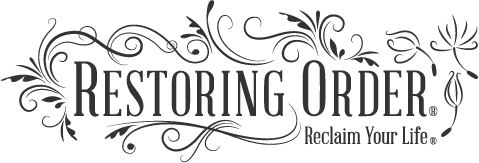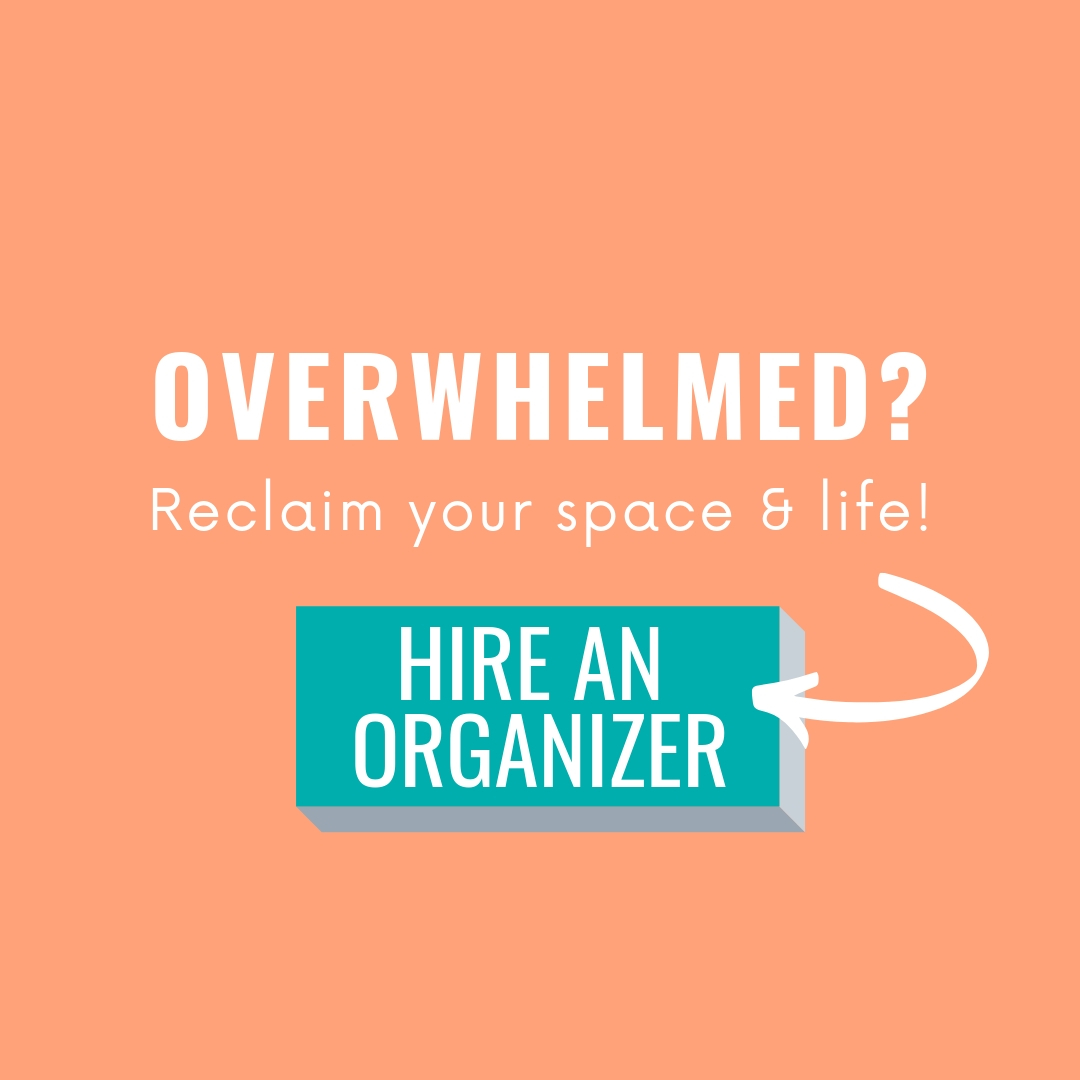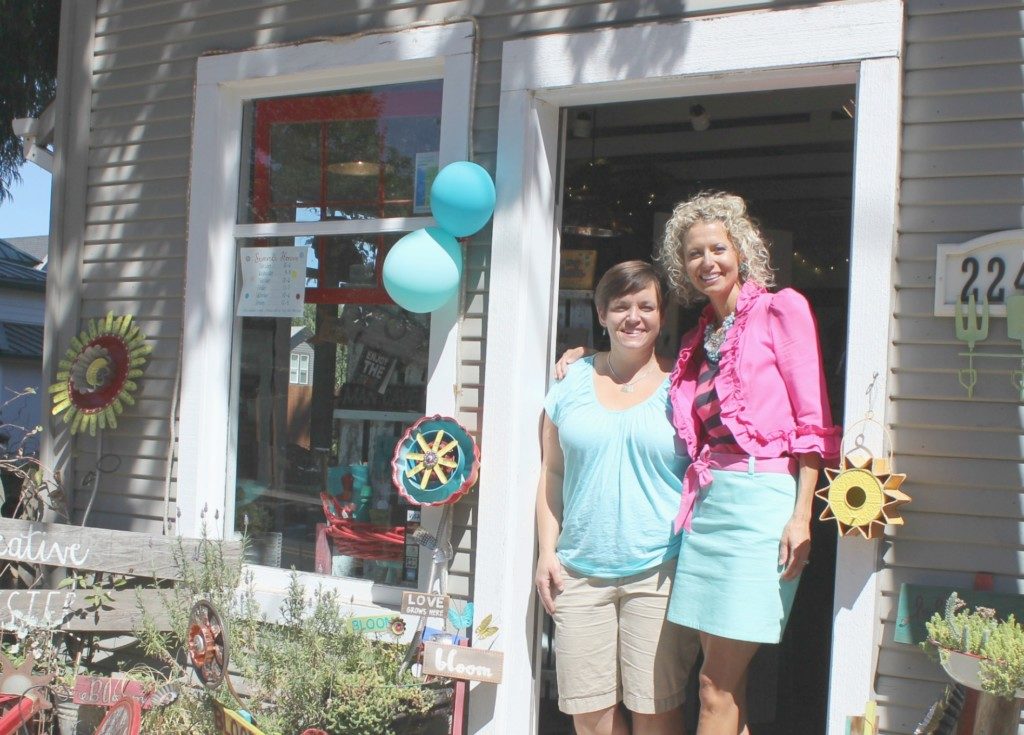
A space with too much going on causes confusion, lack of productivity, and paralysis. That is especially true in business where your amount of order (or lack thereof) can be directly related to your bottom line.
As a small business ourselves, we love equipping other small businesses to thrive. We recently took on organizing an artisan shop called Creative Sister in Sherwood, OR. This makeover is a great demonstration of how re-imagining your space can eliminate mental and physical clutter.
THE SITUATION
Creative Sister owner, Wendy, had too much going on at her register area in her store. She was trying to create pieces of art in the same tiny space she was checking people out with their purchases. Receipts, reminders, a huge shelf of supplies, extra materials, her drill and nails, and gift bags and tissue were all landing in one small zone with very limited counter space.
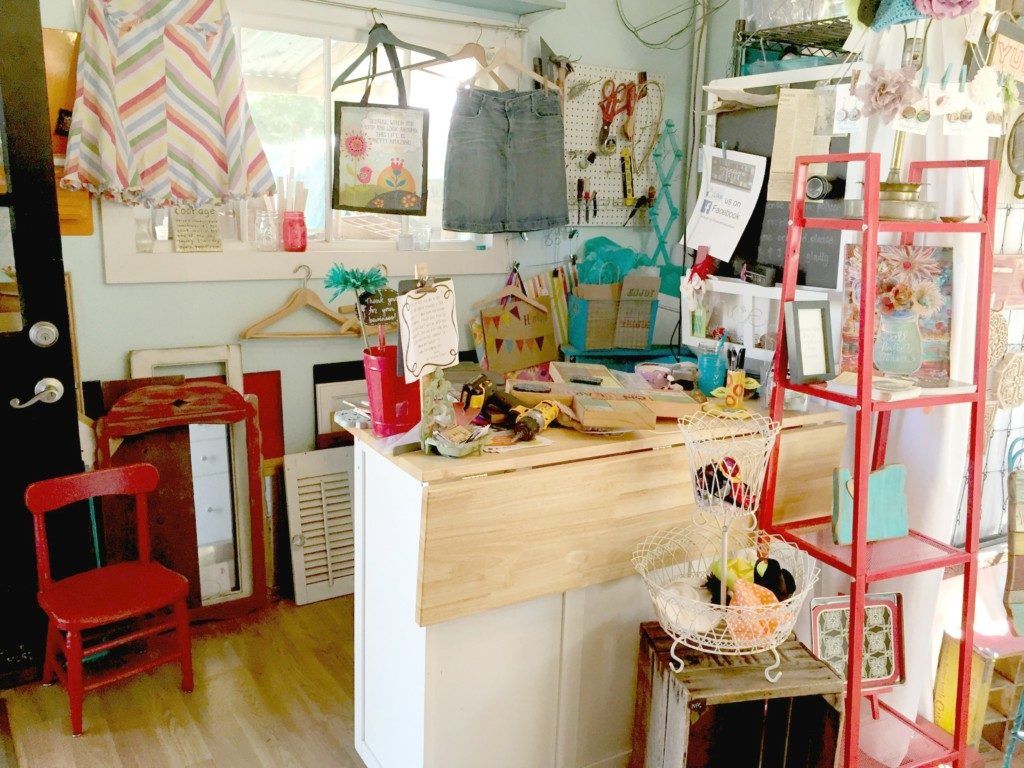
Although she has a large outdoor area for creating the unique pieces that she sells in her store, the Oregon weather often forces her operation inside.
We quickly realized that the dual purpose of this small corner was causing a lot of confusion. This is a common cause of clutter – too many “purposes” for one space! One of our favorite organizing strategies is the “Only Policy” – establishing a single purpose for a space.
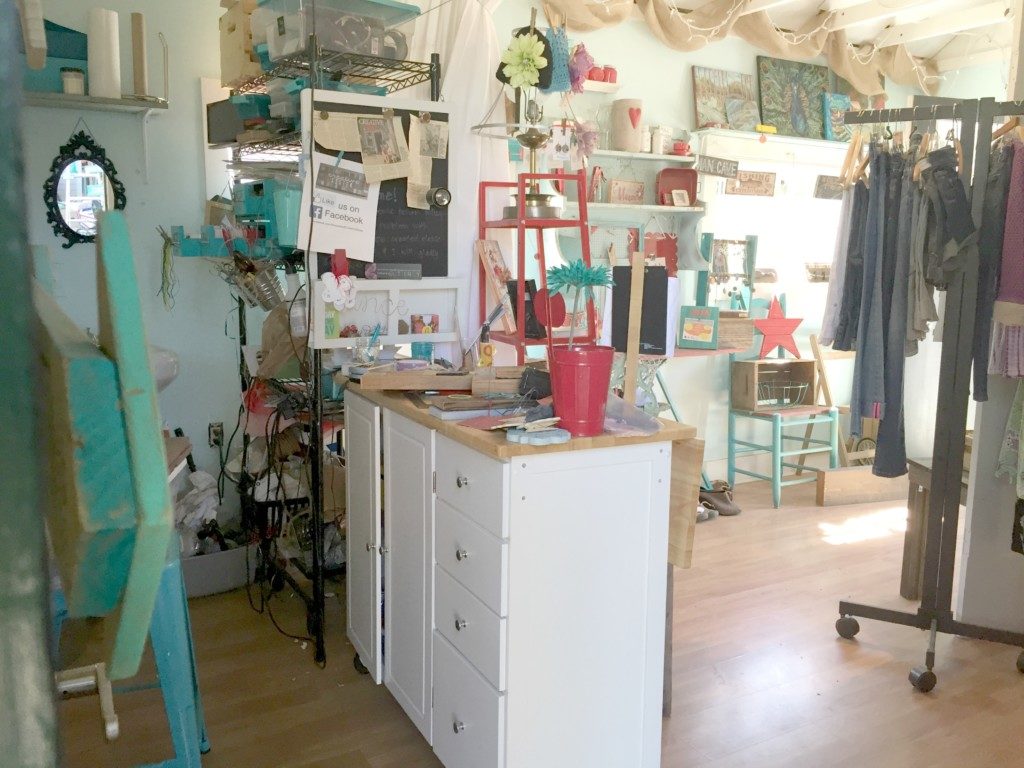
In Creative Sister’s check-out area, we needed to remove materials and “creating” from this small space and limit the purpose to just her retail management. We called this space the “SMS” – the Store Management Station, which includes everything it takes to merchandise the store:
- pricing items
- bagging up items
- taking payment and tracking receipts
THE PROCESS
With a team of friends, we set out on the first step of the project: unloading the space.
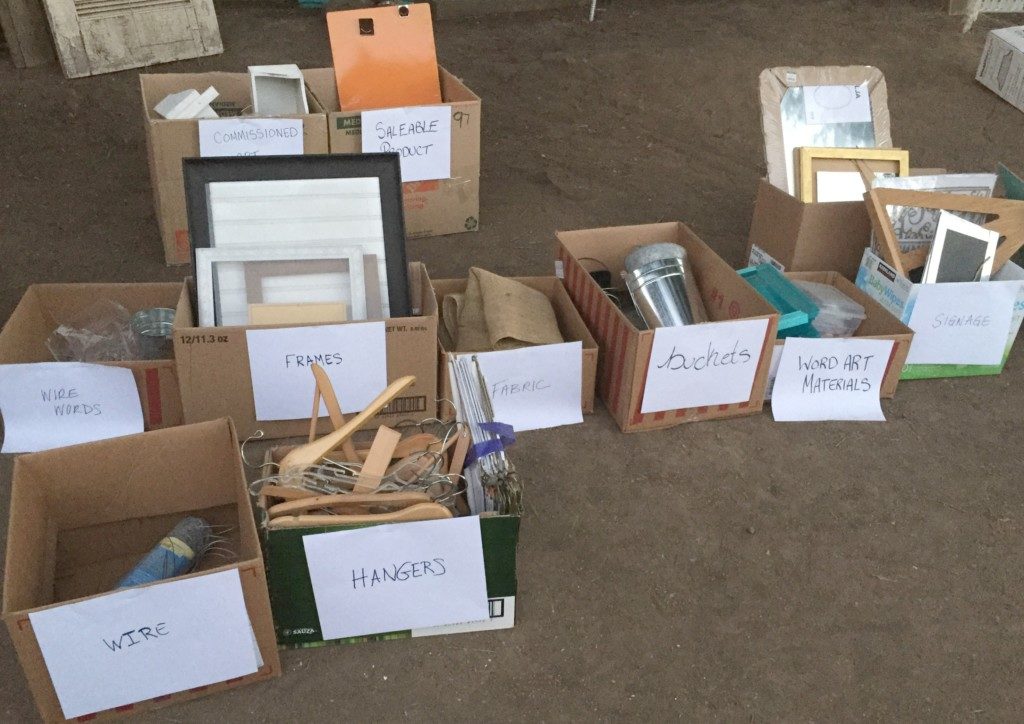 It was amazing to see how much stuff came out of the shop! This step in the process was critical – we needed a blank slate to create something new. The old systems weren’t working, so we wanted to start from scratch and re-imagine the space to really serve Wendy’s needs. Removing everything from a space can remind us how much flexibility we actually have!
It was amazing to see how much stuff came out of the shop! This step in the process was critical – we needed a blank slate to create something new. The old systems weren’t working, so we wanted to start from scratch and re-imagine the space to really serve Wendy’s needs. Removing everything from a space can remind us how much flexibility we actually have!
We begin every organizing project with a macro sort. Before establishing systems or locations for items, you first must find out what you have. This is how you develop an organic, rather than an arbitrary, system.
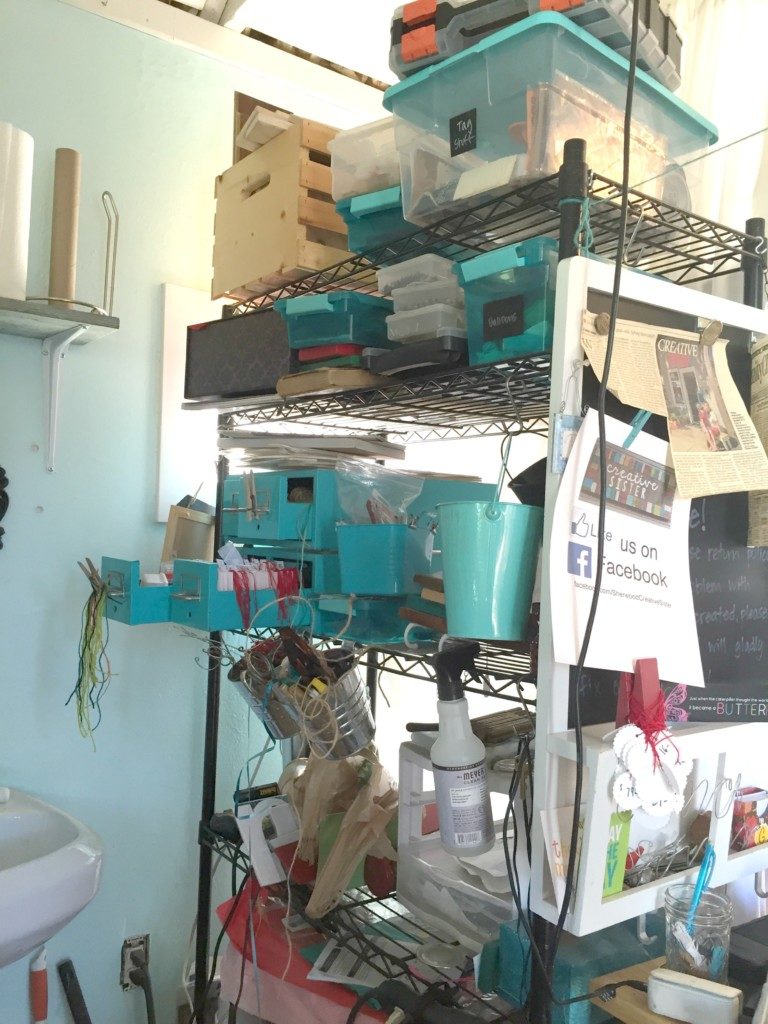 While unloading the space, we removed a lot of saleable products, pieces in progress, and commissioned projects. We sorted the materials into these categories so we could decide what needed to happen with each type of material. We also determined what materials needed long term storage and placed those items in the rafters to reclaim space.
While unloading the space, we removed a lot of saleable products, pieces in progress, and commissioned projects. We sorted the materials into these categories so we could decide what needed to happen with each type of material. We also determined what materials needed long term storage and placed those items in the rafters to reclaim space.
The next step was removing all the wall clutter. One common organizing mistake is bulletin board abuse. Bulletin boards and magnet boards are the nemesis of visual creatives! They put ideas, reminders, contact information, and everything else up on a board to remember them, but the layers of mixed items don’t work and actually just cause chaos. We recommend also applying the “Only Policy” to bulletin boards and sticking to only one type of item living on them. If this is too challenging, then remove them altogether! That’s what we did at Creative Sister.
PURPOSING SPACE: Check-out counter
We worked with Wendy to think through what the purpose of the check-out space should be. We wanted an inviting, open space for people to set their purchases and purses to allow for a seamless check-out process. Bags for bagging up purchases needed to be easily accessible. Gift wrap and greeting cards needed to be visible at check-out so customers could take advantage of that service. She also needed a system for processing customer receipts and for tracking purchases and inventory.
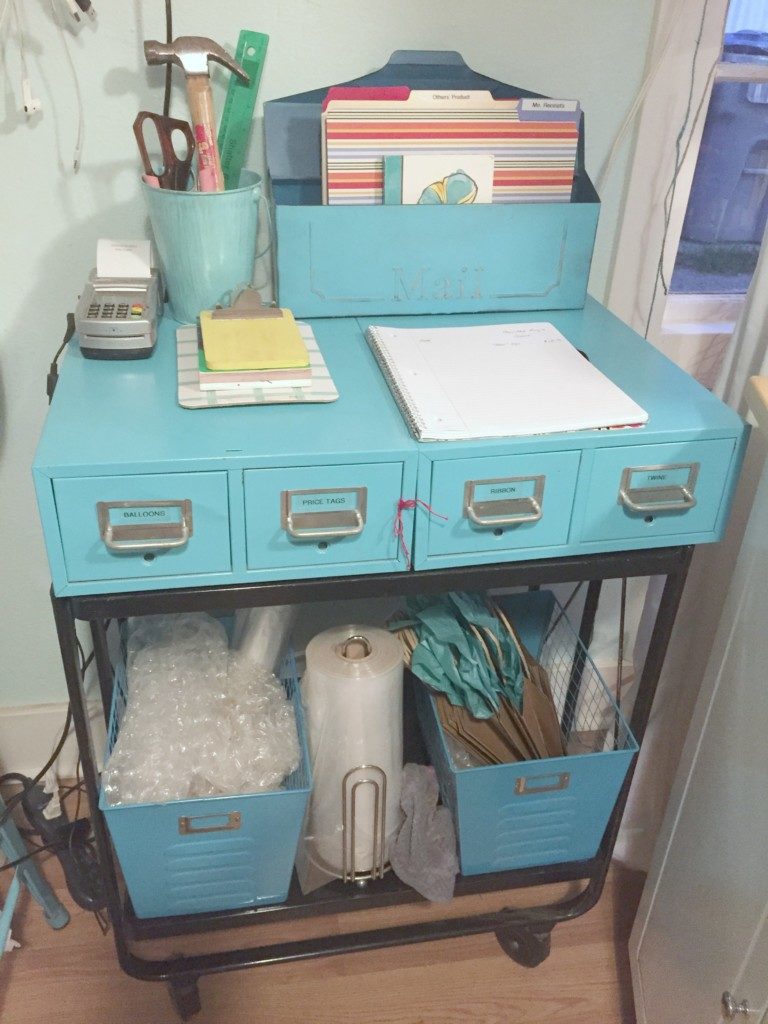 Establishing this clear purpose for the check-out area made determining what should – and should not – go in the space a breeze. Creating would no longer be happening in this space. A new work space was needed (and will be tackled in another project!) As we went to work creating the check-out area, we made sure to honor and capture the creative, whimsical nature of the store.
Establishing this clear purpose for the check-out area made determining what should – and should not – go in the space a breeze. Creating would no longer be happening in this space. A new work space was needed (and will be tackled in another project!) As we went to work creating the check-out area, we made sure to honor and capture the creative, whimsical nature of the store.
We discovered a rolling cart and two metal card files that were previously buried on huge, overburdened shelving. We used these as a “register” with a credit card machine, receipt-signing clipboard, and receipt file. Receipts, which were formerly shoved in a bin in the magnet board, were relocated here for easy filing.
We hung a cute chair on the wall behind the register and put paper bags & tissue on it, artfully displaying a key checkout function. Postcards of upcoming shows and local events were moved off the counter and the gift wrap and gift cards were made a central feature.
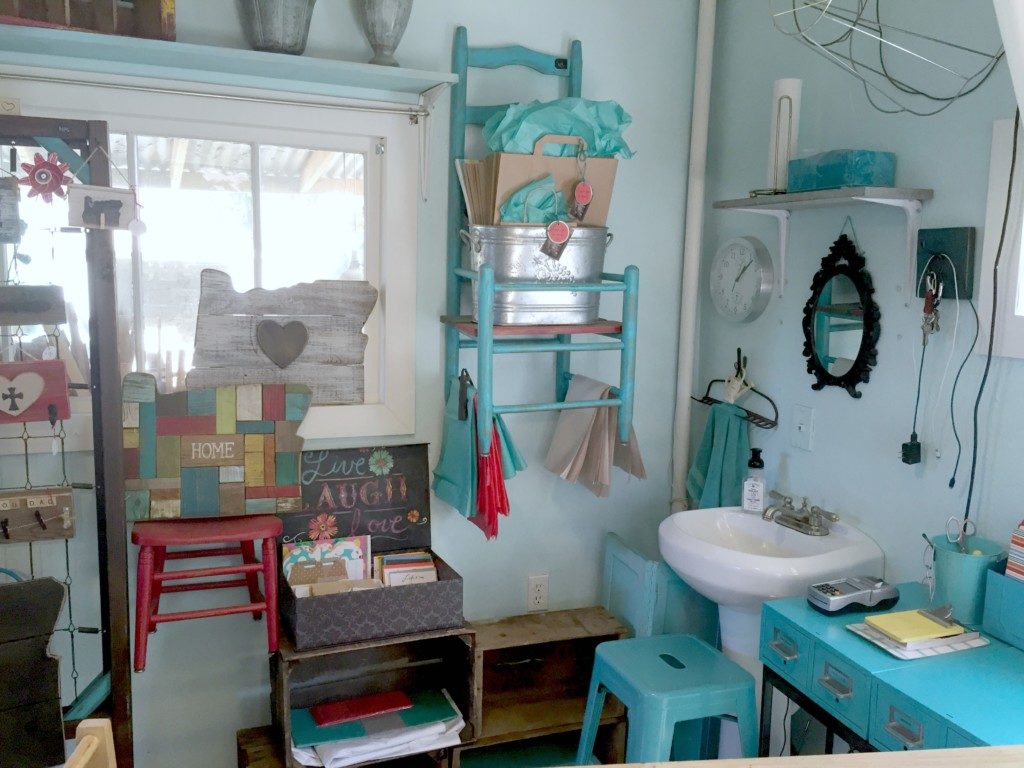
Wendy also needed a sales tracking system. Good organizing doesn’t just put things in files – it solves problems – and Wendy needed to track not only SALES but also INVENTORY. We helped her establish a spreadsheet to track her daily, weekly, and monthly sales and inventory, which will be a great tool come tax time!
REIMAGINING SPACE: Merchandising the store
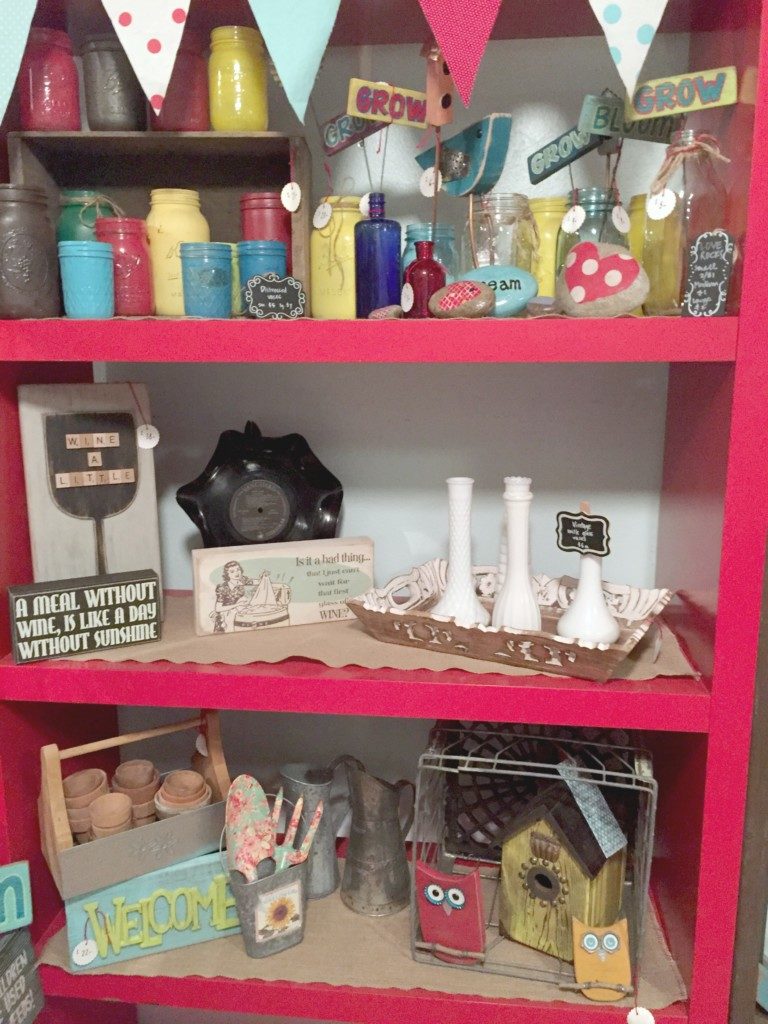 With the store being a blank slate, thanks to our massive unload, we were able to re-imagine the customer’s experience when visiting Creative Sister. Wendy has many unique pieces in her store and we wanted to help set up a space that accentuated these pieces and eliminated visual clutter. We moved things around to allow for more retail space and removed a curtain that was dividing the space. We also helped Wendy rethink her product mix and determine products to phase-out that didn’t add value.
With the store being a blank slate, thanks to our massive unload, we were able to re-imagine the customer’s experience when visiting Creative Sister. Wendy has many unique pieces in her store and we wanted to help set up a space that accentuated these pieces and eliminated visual clutter. We moved things around to allow for more retail space and removed a curtain that was dividing the space. We also helped Wendy rethink her product mix and determine products to phase-out that didn’t add value.
Having sorted the materials that came out of the space, we were able to determine what sale-able products Wendy had and how much space she needed for properly displaying them. Rather than simply shuffling clutter, we had taken back control over the space and the customer’s experience when walking through the door. Now Wendy’s beautiful creations are proudly displayed in a way that removes mental and physical clutter both from the customer’s perspective and certainly from Wendy’s!
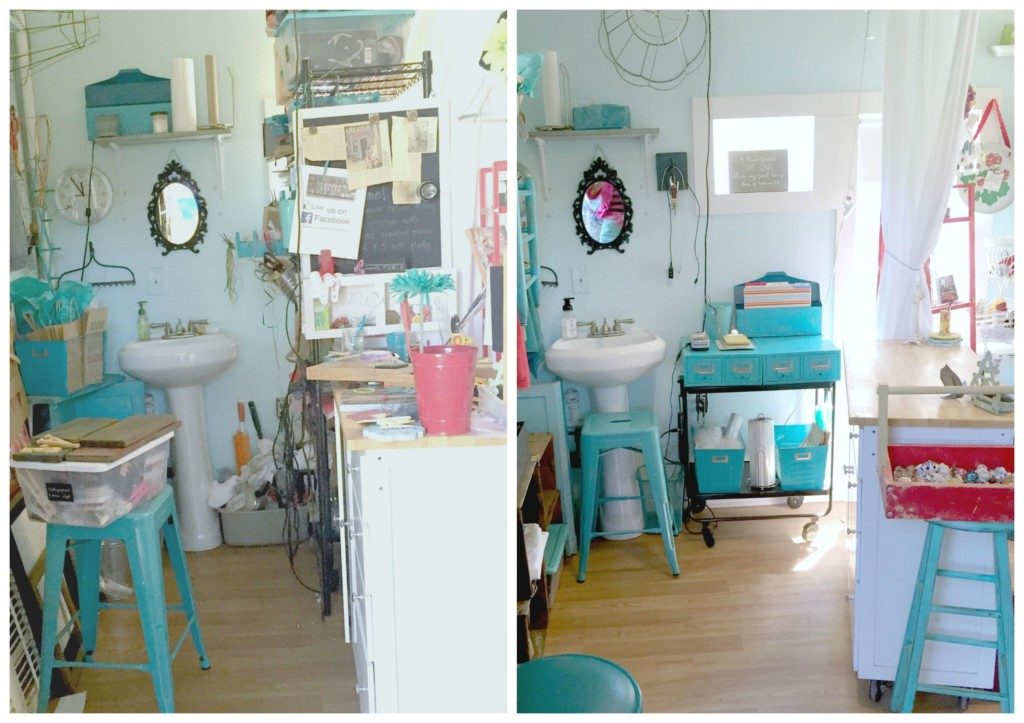
This project took over 30 hours to complete. It was a large investment for this small business owner. But, the peace of mind and sense of being in control over the space and her systems has already paid off many times over. Wendy is now positioned to thrive in her business and to take on the next creative idea that comes to mind!
Watch a recap of this transformation that was featured on More Good Day Oregon below:
Related
- Get hands on help for your own makeover project. Learn more about our Business Consulting Services
- Learn more helpful organizing principles in Vicki’s book Reclaim Your Life and Get Organized for Good
- Is Paper a problem in your office? Check out our Home Offices Workshop DVD
